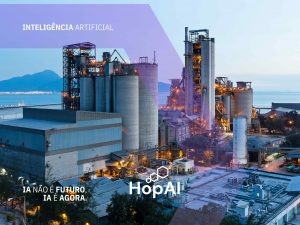Machine Learning is one of the most promising areas of artificial intelligence and has revolutionized the way we handle data and make decisions. However, as with any field of research, there are challenges to be faced, and in this post, we will explore some of them.
Insufficient Training Data
This is a common problem in this area. Machine learning algorithms require a large amount of data to function correctly. Even for simpler problems, hundreds of examples are usually needed.
With too few training data available, we run the risk of the model not being able to capture all the patterns and variations of the problem, which can result in inaccurate or limited outcomes. Some ways to deal with this problem include the use of synthetic data generation techniques, strategic sampling, or the use of transfer learning algorithms that allow models to be trained with less data.
Unrepresentative Training Data
When we train a model, our goal is for it to generalize to unseen data during training, and for this to be possible, the examples used must be representative, i.e., they need to be varied and a faithful sample of the population of data that the model will encounter when used in production.
Imagine we want a model that recognizes images of cars, and we train it with a dataset that mainly contains images of pink cars. When this model is used in the real world, it may have difficulty recognizing automobiles of other colors besides pink.
One way to solve the problem would be to increase the quantity and diversity of these data to ensure a better representation of reality and use cross-validation technique to help ensure that the model is trained on a representative dataset.
Low-Quality Training Data
Naturally, training data full of errors, outliers, or noise will cause the model to struggle to detect basic patterns and as a result, it is less likely to perform well, negatively affecting the model’s generalization ability.
For example, a spam classification model trained with a dataset with many examples of emails incorrectly labeled as spam, may be unable to adequately distinguish between messages that are legitimate and those that are not.
To avoid this problem, we can dedicate more time to cleaning this data by removing missing values, duplicate data, outliers, etc. Other techniques that can also be applied are the imputation of missing values, data transformation, or the use of more robust models capable of dealing with lower quality data and anomalies.
Irrelevant Features
Irrelevant features are those attributes that do not have a significant impact on the model’s output and when included in training, can impair the system’s accuracy. For example, using the number of siblings does not seem to contribute to whether a person may or may not have heart disease, so it would not make sense to use this feature in the model.
Our model will only be able to learn if the data has enough relevant features for this, and to avoid this type of problem, we can use feature selection techniques, such as correlation analysis or principal component analysis (PCA) and feature engineering techniques.
Overfitting of Training Data
Another common problem in machine learning tasks is overfitting, which occurs when the model performs well on the training data but does not generalize as well on unseen data. In other words, the model memorizes the data instead of learning the patterns that can be applied to new inputs.
There are some approaches that can help solve the overfitting problem, such as the use of regularization technique, a larger dataset, feature selection, cross-validation, reducing model complexity, and others.
Underfitting of Training Data
Underfitting, on the other hand, occurs when the model is too simple to learn the fundamental structure of the data, making it incapable of fitting properly. As a result, we have poor performance both on the training data and on new data.
Possible solutions to deal with underfitting might involve using more complex models, minimizing model constraints, or selecting better features from the data.
These are just some of the problems we may face when working with machine learning and some suggestions on how to deal with them. It’s important to keep in mind that data is a fundamental part of this process, and its quality and relevance have a direct impact on our results. Therefore, it’s worth dedicating time to understanding, selecting, and pre-processing this input to achieve more accurate models capable of generating valuable insights for the company.




